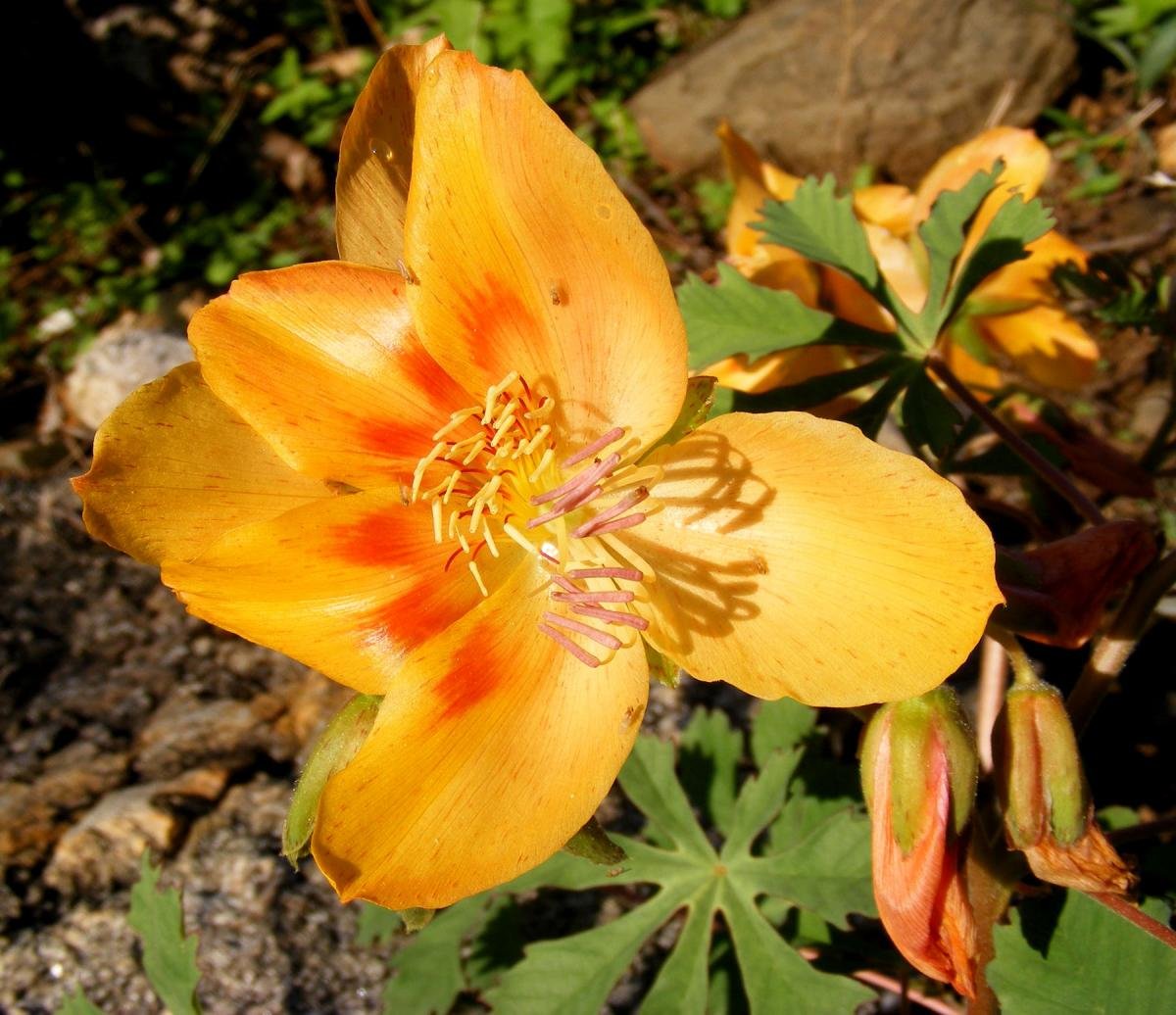Mexican Yellowshow
Cochlospermum palmatifidum
Family: Bixaceae
This genus is more well-known as Amoreuxia.
Palmate-leafed perennial growing from an underground tuberous rhizome. Gorgeous yellow flowers summer into fall followed by papery, ovoid capsules and large kidney-shaped, black seeds. Plants go dormant in winter, foliage dying on top. Plants re-emerge in spring from the roots.
Part sun, moderate water with good drainage, hardiness not really known but probably at least to 10°F.
The entire plant is edible. People eat the tuber raw or roasted, often with lime juice to add flavor. Green fruits are eaten raw. Mature seeds are ground into a meal that produces a coffee substitute of purportedly excellent flavor.
Nectar-seeking insects love this plant.
Genus name, Cochlospermum, is from the Greek words "kochlos" which means snail and "sperma" which means seed and they refer to the shape of the seeds. The species, palmatifida, means palmately divided, referring to the leaves. The three species in North America all used to be in the genus Amoreuxia. There are species of Cochlospermum that range from herbs to trees native to tropical regions of the world, particularly Latin America, Africa, the Indian Subcontinent, and Australia.
Found on dry rocky slopes and mesas from 2,500-5,000 ft from Arizona and New Mexico, through Mexico, Central America and Colombia.
C. gonzalezii, a related, similar species, is only known in Arizona from small populations in the Baboquivari and Santa Rita Mountains in Pima and Santa Cruz counties. C. gonzalezii can be differentiated from the common, widespread C. palmatifida by its lavender lower stamens (not dark maroon), spherical seeds (not kidney shaped), and the longer hairs on the ovary.
The only other species in North America is C. wrightii, which has less lobes on the palmate leaves (usually 5 instead of 7). It is found in the Rio Grande Plains, northwest near the Rio Grande to Terrell County, also northeastern Mexico, and possibly as far south as Peru.

The flowers of C. palmatifidum, notice the maroon colored stamens. Photo by Liz Makings, SEINET

Flowers of C. gonzalezii, notice the lighter, cream-colored anthers, photo by Robert Anthony Villa, iNaturalist

Photo of a green C. palmatifidum fruit. Notice the kidney-shaped seeds which differentiate it from C. gonzalezii. Photo by Sue Carnahan, SEINET

Fruits opened with seeds of C. gonzalezii. Photo by Thomas Van Devender, SEINET

C. wrightii, has 5-lobed, palmate leaves instead of 7-lobed leaves. Photo by Carlos Velazco, iNaturalist

